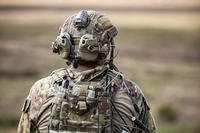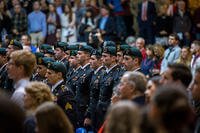When Lt. Lester J. Maitland became the first pilot to hit the 200-mph mark in 1923, he received a letter of congratulations from none other than Orville Wright. Maitland, one of the Army's first test pilots, was assigned to the Wilbur Wright Experimental Field for six months before moving on to a two-year assignment with the 6th Aero Squadron in the Hawaiian Territories. But Maitland didn't slow down.
During a stint as aide-de-camp to Gen. William "Billy" Mitchell, Maitland piloted one of the bombers that sank the German battleship Ostfriesland, the first ship sunk by aircraft (as required by treaty) in 1921, and placed second in the 1922 Pulitzer Air Race. On Oct. 14, 1923, flying a Curtiss R-6 racer, he broke the world's absolute speed record at 244.94 mph.
Still, Maitland didn't slacken his pace. He piloted the world's first transoceanic flight from California to Oahu on June 28, 1927. With Lt. Albert Hegenberger as navigator, Maitland flew 2,416 miles in 25 hours, 49 minutes, and 30 seconds. This, the longest open-sea flight to that date, was accomplished in a Fokker C-2 trimotor dubbed the "Bird of Paradise" by the two lieutenants. For their feat, they were awarded the Distinguished Flying Cross by President Calvin Coolidge.
At the outbreak of World War II, Maitland, now a lieutenant colonel, was commanding officer of Clark Field in the Philippines. When the base fell, Maitland might well have put on the brakes. Instead, he organized and trained the 386th Bombardment Group for combat duty in Europe, cited as the outstanding medium bomber group in the European theater. Maitland himself flew 44 combat missions and received his second Distinguished Flying Cross, the Silver Star, and five Air Medals.
Retiring from the Army Air Corps in 1943 after 26 years of service, Maitland held the posts of director of aeronautics for his home state of Wisconsin and Civil Defense director for Michigan. Just when it seemed fitting for the perpetually-in-motion Maitland to retire, he changed careers. In 1955, Maitland was ordained an Episcopal priest. He remained active in the church until 1985, five years before his death at age 91.
















